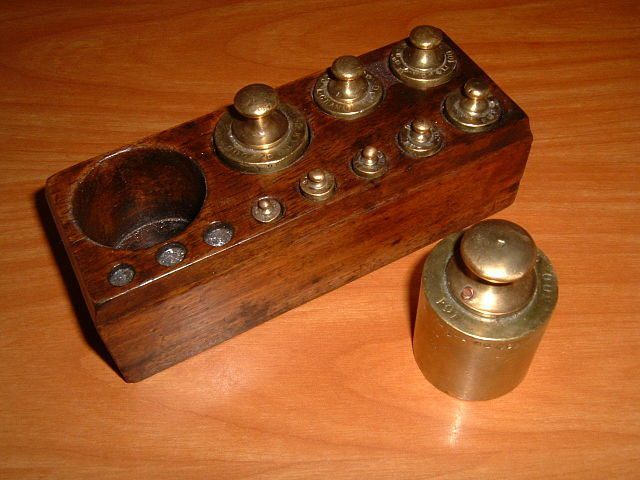Weighing scales are devices that have become an essential part of daily life, used everywhere from grocery stores to laboratories. While they may seem simple, these devices rely on fundamental principles of physics to measure weight and mass accurately. Scales have evolved significantly over the years, encompassing everything from the classic balance scale to advanced digital models. In this article, we’ll explore the different types of weighing scales, how they work, and their importance in various industries.
The Origins of the Weighing Scale: From Balance Scales to Modern Devices

The traditional weighing scale, known as a balance scale, has been in use for centuries. This scale consists of two plates or bowls that hang at equal distances from a central point, known as a fulcrum. One plate holds the object to be weighed, while the other holds a set of standardized weights. When the plates level off, the weight of the object matches the weight on the opposite side.
This balancing method is still widely used today, although modern scales now incorporate more advanced technologies. In particular, digital scales and spring scales have replaced many balance scales, offering improved accuracy and ease of use.
How Different Types of Weighing Scales Work
Several types of scales are available today, each using different physical principles to measure weight or mass. Here’s a look at the most common types:
1. Balance Scales
Balance scales rely on the principle of equilibrium. When objects on both sides of the balance have equal mass, the scale levels off, indicating that the weight is balanced. This type of scale is ideal for high-precision measurements and is still used in scientific labs.
2. Spring Scales
Spring scales measure weight based on Hooke’s Law, which states that the extension of a spring is directly proportional to the force applied to it. The spring stretches as weight is applied, and the amount it stretches corresponds to the weight of the object. This type of scale is often seen in hanging fruit and vegetable scales in grocery stores.
3. Digital Scales
Digital scales are commonly used in kitchens, bathrooms, and labs for quick and precise weight readings. These scales use strain gauges, which measure changes in electrical resistance as weight is applied. The resistance change is converted into a digital readout, offering an accurate weight measurement almost instantly.
4. Platform Scales
Platform scales are heavy-duty devices often used in industrial and commercial settings to weigh large, bulky items. The platform holds the object while sensors beneath it measure the weight. This type of scale is frequently found in warehouses and shipping centers.
The Role of Calibration in Accurate Weighing
To maintain accuracy, scales must be calibrated regularly. Calibration ensures that the scale provides accurate readings, which is essential in fields like pharmaceuticals, where precise measurements are crucial. Here’s how calibration works:
- Adjusting for Consistency: Calibration involves adjusting the scale so that it returns to a zero or neutral position when there’s no weight applied. This ensures consistency in measurements.
- Using Standard Weights: Standardized weights are placed on the scale to check its accuracy. The scale is adjusted until it reads the correct weight for these standards.
- Frequency of Calibration: Calibration frequency varies based on the scale’s use. High-precision scales in scientific environments may need daily calibration, while household scales may only need periodic checks.
Weighing Units: Understanding Mass vs. Weight

It’s essential to understand the difference between weight and mass, as scales can measure both. Here’s a breakdown:
- Weight: Weight is the force exerted by gravity on an object and is measured in units of force, such as newtons. When you stand on a scale, it typically measures your weight.
- Mass: Mass is a measure of the amount of matter in an object, independent of gravity. Mass is measured in units such as kilograms or grams. Scales that measure mass are often used in scientific settings where precise measurements are required.
Some scales can be calibrated to measure either weight or mass, depending on the application. This versatility makes scales invaluable in various industries, from grocery stores, where items are sold by weight, to laboratories, where exact masses are critical.
Applications of Weighing Scales in Everyday Life

Weighing scales are used in multiple settings, from commerce to research. Here are some key areas where scales play a vital role:
Retail and Grocery Stores
In grocery stores, products are often priced based on their weight. Scales ensure accurate pricing and help customers pay for only what they’re purchasing. Scales used in retail settings are typically digital, allowing for quick, accurate measurements.
Healthcare
In the healthcare industry, weighing scales are used to track patient weight, which is essential for monitoring health. They’re also used to measure the exact amounts of medicine or supplements, where precision is critical for patient safety.
Laboratories and Research Facilities
Scientific research often requires accurate measurements of chemicals, compounds, and other substances. Laboratory scales offer the precision necessary to ensure reliable results, whether for medical research, chemistry, or biology.
Industrial and Commercial Use
Heavy-duty platform scales are commonly found in factories, shipping centers, and warehouses. These scales handle large loads, weighing items like freight, machinery, and building materials. Accurate weight measurements are essential for logistics, safety, and compliance in these industries.
The Future of Weighing Scales: Innovations and Trends

As technology advances, so do the capabilities of weighing scales. Here are a few trends shaping the future of these essential tools:
1. Smart Scales
Modern scales are becoming “smart,” with connectivity options like Bluetooth and Wi-Fi. These scales can sync with smartphones and apps, allowing users to track their weight over time, set goals, and even share data with healthcare providers.
2. High-Precision Digital Scales
As the need for precision increases in industries like pharmaceuticals and food production, scales are becoming more sensitive and accurate. High-precision digital scales now offer measurements accurate to the milligram, making them ideal for tasks that require exactness.
3. Environmentally Friendly Scales
Many scale manufacturers are focusing on sustainability, creating scales with eco-friendly materials and energy-saving features. Solar-powered scales and those with low-energy LED displays are part of this trend, reducing environmental impact while maintaining functionality.
Conclusion: The Lasting Impact of Weighing Scales on Our Lives
Weighing scales, whether digital, spring-based, or traditional balance scales, are tools that continue to hold significant value across numerous fields. These scales have evolved from simple devices for measuring mass into sophisticated instruments that cater to a wide range of needs, from basic household tasks to complex scientific research.
By understanding the types, uses, and maintenance of weighing scales, we gain a greater appreciation for their role in our daily lives. As technology progresses, scales will undoubtedly continue to adapt, becoming even more precise, user-friendly, and environmentally conscious. Whatever the future holds, the weighing scale remains a testament to human ingenuity and our constant drive for accuracy and reliability.


